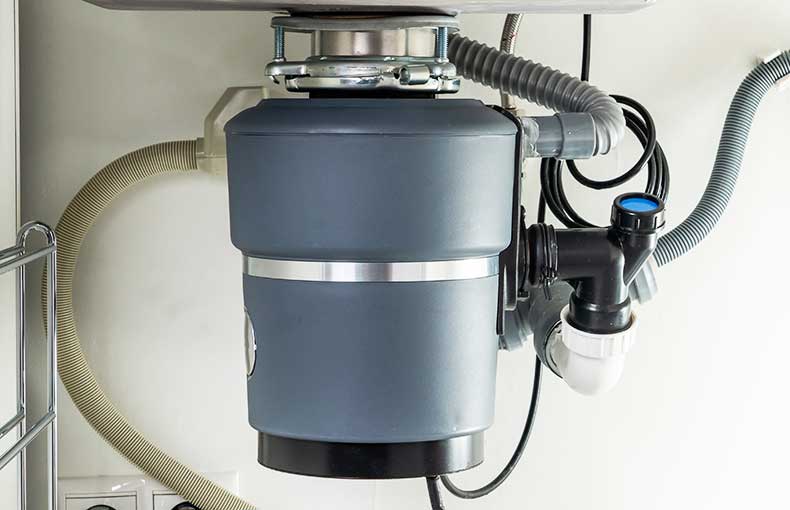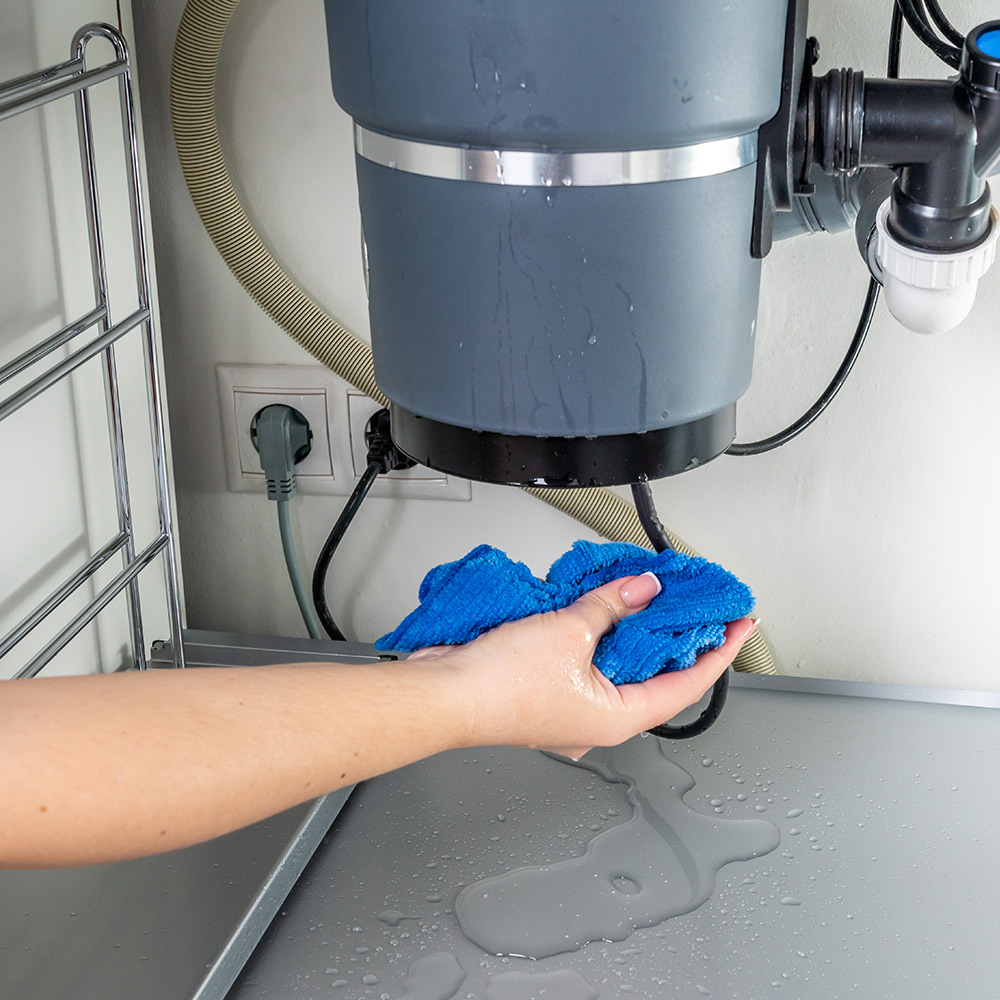Straightforward Techniques for Repairing a Leaky Garbage Disposal
Straightforward Techniques for Repairing a Leaky Garbage Disposal
Blog Article
Just how do you actually feel on the subject of How to fix a pretty consistent leak from my garbage disposal?

Waste disposal unit are vital kitchen devices that help in taking care of food waste effectively. Nonetheless, a leaking waste disposal unit can be an irritating and messy problem to take care of. Thankfully, several leakages can be fixed quickly with a few easy actions. In this post, we will certainly review how to deal with a dripping waste disposal unit effectively.
Introduction
Waste disposal unit are mounted under kitchen sinks and are developed to shred food waste right into smaller pieces, permitting it to pass through the plumbing system quickly. While these gadgets are generally reliable, leakages can take place in time due to wear and tear, loose links, or damage to the unit.
Typical Root Causes Of Leakages in Rubbish Disposals
Worn Seals and Gaskets
Seals and gaskets play a critical role in stopping water from dripping out of the waste disposal unit. Gradually, these parts can degrade, bring about leaks around the disposal device.
Loose Links
The connections between the waste disposal unit and the plumbing system can become loose with time, creating water to leak out throughout operation.
Cracks or Openings in the Disposal Device
Physical damage to the waste disposal unit, such as fractures or holes in the real estate, can additionally cause leakages.
Identifying the Resource of the Leak
Prior to trying to fix a leaking waste disposal unit, it is essential to identify the resource of the leak. This can usually be done through visual evaluation or by performing straightforward examinations.
Visual Examination
Evaluate the garbage disposal unit meticulously for any kind of signs of water leakage. Pay close attention to areas around seals, gaskets, and link factors.
Examining for Leaks
One means to examine for leaks is by running water with the disposal system and looking for any type of noticeable indications of leakage.
Devices and Products Needed for Dealing With a Leaking Garbage Disposal
Prior to beginning the repair work procedure, gather the essential devices and materials, consisting of a screwdriver, adjustable wrench, plumbing professional's putty, replacement seals or gaskets, and epoxy or patching product for repairing splits or holes.
Step-by-Step Guide to Fixing a Dripping Waste Disposal Unit
Turn Off the Power
Before trying any fixings, make certain that the power to the garbage disposal system is turned off to stop the danger of electric shock.
Find the Leak
Identify the precise place of the leakage and figure out the cause.
Tighten Connections
Utilize a wrench to tighten up any kind of loose connections between the disposal device and the pipes system.
Replace Seals or Gaskets
If the leakage is because of worn seals or gaskets, eliminate the old parts and change them with new ones.
Patching Fractures or Holes
For fractures or holes in the disposal unit, usage epoxy or a suitable patching product to seal the broken location.
Evaluating the Waste Disposal Unit After Repair Work
As soon as the fixing is total, examine the garbage disposal by running water with it to make certain that the leakage has actually been resolved.
Preventive Upkeep Tips to Stay Clear Of Future Leaks
To prevent future leaks, it is necessary to do normal maintenance on your garbage disposal. This includes keeping it tidy, staying clear of placing non-food things or hard things down the disposal, and occasionally looking for leakages or various other problems.
Conclusion
Finally, dealing with a dripping garbage disposal is a fairly uncomplicated procedure that can be completed with fundamental tools and products. By following the actions described in this short article and exercising preventive maintenance, you can keep your garbage disposal in good working problem and avoid costly fixings in the future.
HERE’S HOW TO FIX YOUR GARBAGE DISPOSAL
WHAT TO DO IF SOMETHING IS STUCK IN YOUR GARBAGE DISPOSAL
If the impeller won’t turn, there’s probably something stuck in the disposal. It could be a steak bone or peach pit, although plumbers report pulling all sorts of inappropriate objects out of disposals, such as bottle caps or aluminum foil. Make sure power to the disposal is off, and look inside to see if you can see the source of the jam.
Never stick your fingers in a disposal. Pull out anything you see with tongs or pliers.
If the disposal still won’t work, it may be time to call a plumber or consider buying a new disposal. GEM Plumbing & Heating is here for all of your garbage disposal needs.
WHAT TO DO IF YOUR GARBAGE DISPOSAL DRAIN IS CLOGGED
Take everything out from underneath your sink and put a bucket or other container under your disposal to catch any water that drains out. Disconnect your disposal from the power supply. If it’s plugged into a wall outlet, unplug it. If it’s hardwired into an electrical box, go to the electrical panel and turn off the breaker for the disposal. Pour ¼ cup of baking soda into the drain, followed by ½ cup of white vinegar. Give the solution a few minutes to fizz and do its work. Look into the disposal with a flashlight to see if you can see an object that might be causing the clog. If you see it, remove it using tongs or pliers. MORE TIPS ON DEALING WITH A CLOGGED GARBAGE DISPOSAL
Never use drain cleaner in a garbage disposal. It can damage the plastic parts inside the disposal. You can also be splashed with the caustic liquid while working to clear the clog. Beware! Never stick your fingers into a garbage disposal. Trust us — not a good idea. In many instances, your dishwasher drains through your garbage disposal. This allows the disposal to grind any large food particles that may be drained out of your dishwasher. There are some jurisdictions, however, where the plumbing code prohibits such a connection. WHAT TO DO WHEN YOUR DISHWASHER DRAINS THROUGH THE DISPOSAL
Run some water in the sink so your plunger has at least a ½-inch of water to create a seal and plunge vigorously up and down several times. You may need to repeat this several times. Run hot water down the drain to clear any residue that remains.

Do you enjoy reading up on Why Is ? Leave a comment down below. We will be glad to know your opinions about this posting. In hopes to see you back again before long. Loved our entry? Please share it. Help somebody else find it. Bless you for your time. Visit us again soon.
Book A Service Call Report this page